"Out, you impostors!
Quack salving, cheating mountebanks! your skill
Is to make sound men sick, and sick men kill." -Philip Massinger
It's been a wild ride full of ups-and-downs this week, as we've covered topics from solidly-based science to the theoretically expected, all the way to physical impossibilities and unverifiable, outlandish claims. Sometimes, that's what you get here at Starts With A Bang! If you missed anything, take a look back at everything we've covered this past week, including:
- How do black holes die? (for Ask Ethan),
- Your city in fantasy (for our Weekend Diversion),
- The Omega Nebula, M17 (for Messier Monday),
- The E-cat: cold fusion or scientific fraud?, and
- The foolish fallacy of cold fusion (for Throwback Thursday).
Particularly about the first topic and the last one -- black holes and cold fusion -- you've had an awful lot to say! Some of it deserves to be highlighted, along with responses, so here we go with our latest edition of the Comments of the Week!
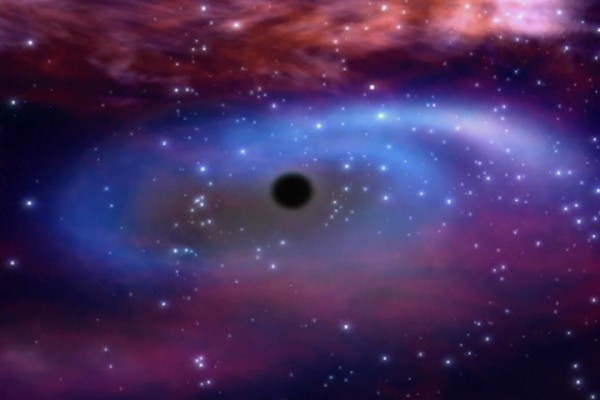 Illustration credit: ESA, retrieved via http://chandra.harvard.edu/resources/illustrations/blackholes2.html.
Illustration credit: ESA, retrieved via http://chandra.harvard.edu/resources/illustrations/blackholes2.html.
From Patrick on the topic of black hole death: "Everyone (and you;) says that eventually black holes will evaporate due to Hawking radiation. Well what does evaporate mean? Does it mean that the black hole gets smaller and smaller until pffft the last bit of energy comes out and then there’s nothing?"
I want you to imagine two types of black holes: one that's the mass of our Sun, with an event horizon of just a few kilometers, and one at the center of a somewhat large galaxy like Andromeda, with an event horizon that's the size of Earth's orbit around the Sun. What do you think the major differences are between these two spacetimes, and in particular, between the two spacetimes at the event horizons?
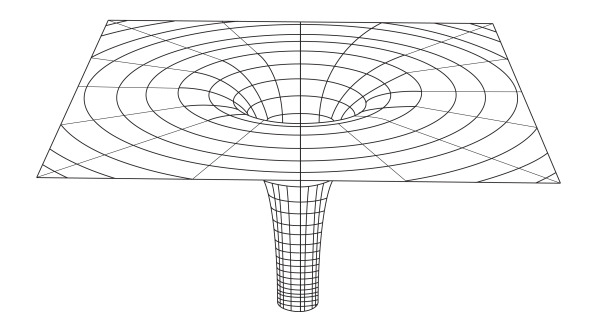 Image credit: Hortense Ardalan, via http://hortenseardalan.com/blackholes.html.
Image credit: Hortense Ardalan, via http://hortenseardalan.com/blackholes.html.
Although both of the spacetimes look like the diagram above, the event horizon of the much smaller mass will be farther down the funnel than the much larger mass, meaning that spacetime is more severely curved at the event horizon of the smaller mass. The rate of radiation coming from the hole, and therefore the rate of "evaporation" -- which is the rate at which the black hole's mass is getting converted into energy in the form of Hawking radiation -- starts off extremely slowly at the highest masses, and then increases as time goes on.
Over time, the radiation starts off with extremely long wavelengths and low fluxes, but increases dramatically over time. A black hole as large as 10^11 kg would have already evaporated in just the age of the Universe, and one that was only 10^5 kg, or 100 tonnes, would evaporate in less than a second! But yes, when it finishes evaporating, all that's left is the radiation, and flat, empty space where the black hole once resided.
From West on the same topic: "So just doing some quick math, the peak in the spectral energy density of Hawking radiation for a 10M_sun black hole is VLF radio. And the peak wavelength only gets longer as the hole gets heavier. Is this fact and the minuscule power the reasons why Hawking radiation in astrophysical blackholes may never be observed?"
The long wavelengths aren't so much of a problem; all you need to do to detect an arbitrarily long wavelength is to build a detector -- whether it's a telescope or an antenna -- of sufficient size. The largest radio telescope arrays, including LOFAR, Australia's ASKAP, and the future Square Kilometer Array (SKA) will realistically probe frequencies down to just a few megahertz, which translates into 10-to-30 meter waves.
But the low power -- the extremely small energy flux -- is the prohibiting factor. Our best bet to find these will be to look for the smallest black holes out there, which are the ones that likely come from neutron star-neutron star mergers, producing black holes of just under three solar masses. But even that would be an amazing feat, and -- dare I predict -- Nobel-worthy! Stay tuned, and keep your hopes high!
From Javier on Tolkien-style fantasy maps: "Do México City for a challenge."
After viewing Stentor's responses to the huge volume of requests he's gotten, the only thing you'll need to do if you want Mexico City (or any city, for that matter), is:
- Place your order,
- Pay him, and
- Wait for him to catch up on his backlog of orders.
Do that, and the Mexico City map will be yours!
From Eric, the first of many, on the e-Cat and what it would take to accept it as good science: "Complete design plans so that an independent team can build an apparatus of their own, and test it without any interaction or intereference by the inventor team at all.
Without that, just forget it. No need for other criteria; you fail that one, it’s over."
The hallmark of the worst kind of bad science is results that are irreproducible, and this is one problem that has plagued all cold fusion claims. If you can't independently take an experiment, reproduce it, and get -- within reasonable error bars -- the same statistically significant results, you have nothing!
This is why interference in the experiment from Rossi himself is so damning. This is why being presented with a "black box" and being asked to draw conclusions is so scientifically deplorable. And this is why people claiming that this could possibly be construed as something convincing are deluding themselves.
Reproducibility -- independent reproducibility -- is everything in experimental science. And like Eric said, if you don't have that, you have nothing.
From daedalus2u, correctly identifying one (of many) flaws with the test: "The big flaw in this setup is how they did the thermal radiation calculations. Alumina is partially transparent to the thermal radiation the inconel resistors are giving off. That radiation is picked up by the IR camera. If you assume that all the radiation comes from the alumina surface with an emissivity of alumina from a table, then you will get the wrong answer."
This is just a tiny part of how it's easy to fool yourself, and why you need truly independent -- as in, without interference or influence from the original party -- verification. The part that drives me nuts about this is that if this really were a nuclear reaction, putting out more energy than was being put into it, it should be very easy to have this reaction be self-sustaining, and not require an outside power source! Yet in every "test" or demonstration, there always has been one that's never switched off. Also, "coefficients of performance" should be hundreds or thousands of times unity for a nuclear reaction, not a suspicious same-order-of-magnitude as the energy input.
This may have been put better by another commenter, Amanitin, who said: "I saw an awesome comment on this on slashdot.
Anyone claiming to have a box that produces energy, phase sync it to the grid, hook it up, run your meter backwards and collect the checks. Then call me."
That would work, too.
 Image credit: Len Rosen, via http://www.21stcentech.com/tag/andrea-rossi/.
Image credit: Len Rosen, via http://www.21stcentech.com/tag/andrea-rossi/.
From Stephan Pomp, who's done his own research into the e-Cat: "However, it will never help to convince the Cat-believers. It has become (or was from the beginning?) pretty much a religion. Even when Rossi admits manipulating samples his fans ask “so what?”. [...] In addition I can say that of all the responses from E-Cat fans I have received (including “TPR” authors Bo Höistad and Hanno Essén) none is concerned about the technical and scientific issues raised but rather hold that “Rossi is trustworthy” or question my motives."
In science, a trustworthy person is one who is transparent about their materials, methods, procedure and setup. A trustworthy person is open and honest about the scientific method they used to create their apparatus. Just because he's wearing a tiny American flag and has some very chic spectacles doesn't make him trustworthy.
And yet, there will be no convincing the true believers. For example...
Image credit: Phillippe Plailly of http://visualphotos.com/.
From our old commenting buddy Axil: "A great scientific breakthrough was demonstrated in the latest third party test of Rossi’s E-Cat. A polariton BEC was established for days at 1400C protecting the structure of the reactor from meltdown."
From one of my Twitter harassers, AlainCo: "first you deny the 150+peer review papers that report excess heat without much radiation, plus the one reporting tritium… (if you don’t have that tally, why do you talk about that subject ? for you naturwissenschaften, Journal of electroanalytical chemistry , JJAP are bunk journal?)
if you apply scientific method, LENr is proven, and this is just an industrial claim."From Aubrey Cohn: "A fact-free logic-free argument as to why nobel laureates and a panel of prominent european physicists are all wrong, and Ethan Siegel is much cleverer than they. Indeed whole academic conferences are held, the collective intellectual strength of which is insufficient to disturb Ethan in his puissant majesty of intrinsic, inherent correctness about all things of which he is ignorant in fact."
From Csl: "You have to admit that physics doesn’t have all the answers. Where is the missing mass of the universe. Why do we have reality television. Maybe fleishman and pons didn’t have a clue, but there is something going in terms of excess heat with palladium and hydrogen."
From Zephir AWT: "These tricks of cold fusion are all classical physics based and now we can consider various less or more ad hoced quantum and quantum gravity effects, on which roughly sixty existing theories of cold fusion are based. You can browse them and collect another possible effects, which may or may not increase yield of cold fusion. But if you’re lazy to review them one after another, then you simply even cannot know, why the cold fusion can run while the hot one cannot and you’re predestined to oppose it for ever…."
Okay, first off, I have to get this out of my system.
I know that I am incredibly obstinate, think I have all the answers and would never change my mind no matter how much quality evidence I was presented with. Never, under any circumstances, no matter what.
Now that that's out of the way, here's my challenge for all the LENR/cold fusion/e-Cat folks. Design for me one experiment, detailing the setup, materials, procedure, etc., that we can reproduce that yields more energy via the process of LENR/cold fusion than is required to be inputted into the setup to make the reaction proceed in the first place, and as soon as it is independently reproduced and verified, I will advocate that this work should win a Nobel Prize.
Sound fair? Good. Then on to our final comment this week, where we're actually going to learn something real about nuclear physics!
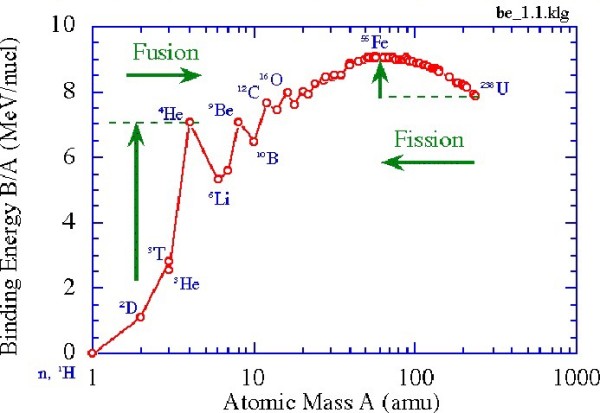 Image credit: J.V. Hofmann, IPP Garching, via http://physics.ucc.ie/~pjm/trachtais_macleinn/HughCallaghanPhD1999/node….
Image credit: J.V. Hofmann, IPP Garching, via http://physics.ucc.ie/~pjm/trachtais_macleinn/HughCallaghanPhD1999/node….
And at last, from Bill G on nuclear binding energies: "I thought the binding energy went down after you get heavier than Iron. How could going from Nickel to Copper release fusion energy?"
Binding energy does go down once you reach the peak, which is either at Fe-56 or Ni-62, depending on how you measure it. So how, then, would it be possible to fuse nickel into copper to release energy?
Because when we talk about binding energy, we talk about binding energy per nucleon, which includes the completely unbound hydrogen nucleus we're starting with, in addition to the tightly bound nickel nucleus.
So you have to ask yourself, what's more tightly bound overall: a copper-63 nucleus, or a nickel-62 nucleus plus a single proton? A copper-65 nucleus, or a nickel-64 nucleus plus a single proton? We normally talk about "mass defect," or how many AMUs (atomic mass units) are lost to binding energy. In other words, if you took all the individual free protons and neutrons that make up the nucleus, and measure the mass of the bound nucleus, what's the difference? That's the mass defect.
Well, the mass defect of nickel-62 is 0.562 AMU, but the mass defect of copper-63 is 0.569 AMU. So even though nickel-62 has a higher binding energy per nucleon than copper-63, copper-63 has more total binding energy. And that's how that fusion reaction could release energy!
Thanks for a very interesting week, and I'll see you all here in all the days to come for more wonders of the Universe!

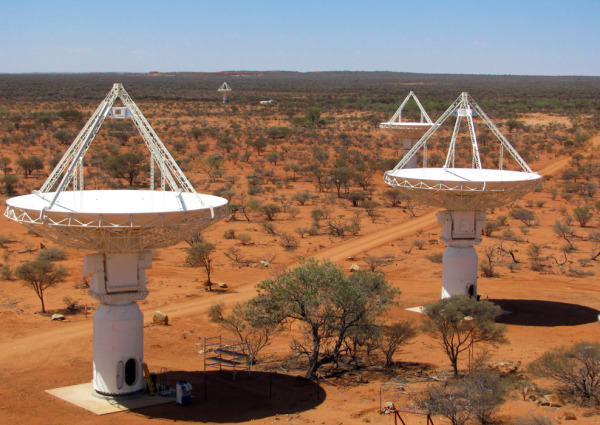
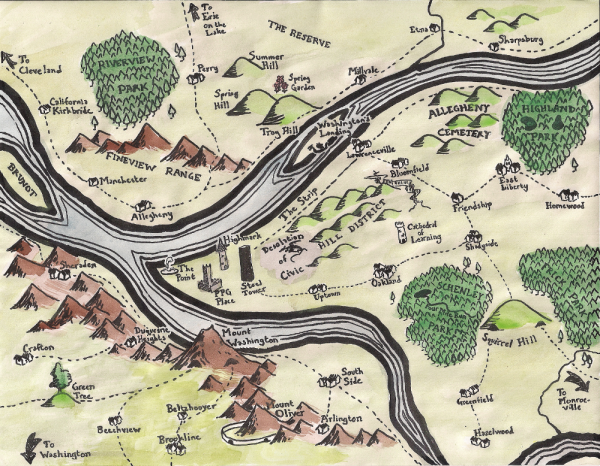


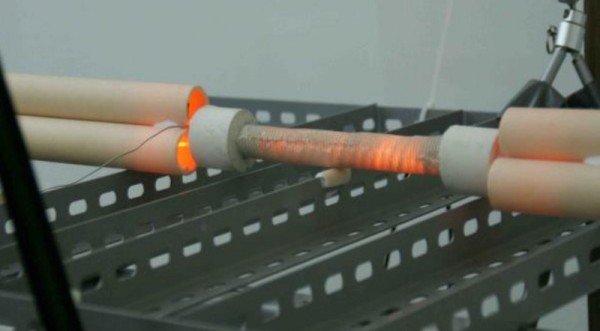

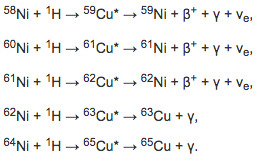
Cake-mix recipe for fusion reactor and four similar engines by Tony Lance 26th March 2007
http://www.bigberthathing.com/fusionII.html
This is the one part of the refutation I don't agree with:
"The part that drives me nuts about this is that if this really were a nuclear reaction, putting out more energy than was being put into it, it should be very easy to have this reaction be self-sustaining, and not require an outside power source!"
What if there really were some unexpected physics going on, and somehow electric current was "catalyzing" fusions? Even if energy out was one part in a million of energy in (because 99.999999% of the time the nuclei don't fuse) that would still be a revolutionary physics result (although useless as far as an energy source). So there is probably no choice but to measure energy-in versus energy out, but obviously this must be done to high precision, and in a manner such that trickery is ruled out.
Now, personally, I don't think Rossi deserves this much, but, it may be the only way to finally put this thing to bed.
If you want to receive a test that you can reproduce you FIRST need to sign a NDA. Once, you see that it works what would you do with the biggest discovery? Could you also state that you would sign also a NDA contract in your article?
Thanks
I think Hawking radiation is crackpot. It sweeps gravitational time dilation under the carpet, it demands particles spontaneously created like worms from mud, and it demands negative energy particles. They just don't exist.
Whilst I'm suspicious of Rossi, I don't think cold fusion is crackpot. A welder uses a blue heat and no pressure, a blacksmith uses red heat and some pressure from hammering, and cold welding uses no heat and lots of pressure. If there's a way to apply immense pressure to hydrogen, you could in principle achieve cold fusion.
Dear Ethan,
I have answered to your anti-cold fusion papers here:\
http://egooutpeters.blogspot.ro/2014/10/learning-from-confrontationalis…
http://egooutpeters.blogspot.ro/2014/10/axils-answer-tothe-siegel-paper…
http://egooutpeters.blogspot.ro/2014/10/victory-or-defeat-all-combinati…
http://egooutpeters.blogspot.ro/2014/10/ethan-siegels-third-bomb-thrown…
I am open to any discussion; why do you think that only fission or fusion can produce nuclear energy?
Peter
As an aside, there are many mainstream scientiifc discoveries that are not reproduced independently for practical reasons (like, society doesn't want to spend the time/money). The discovery of the Higgs boson may be a good example. Drug discoveries are another example, and an example of the problems we can have when we *don't* independently confirm results. However, the critical difference between those cases and the e-cat is that the design specs and methodology are all laid out there on the table; the key information about how to do the experiment is not hidden. Drug companies rigorously guard their patent rights and may spend $billions developing some drug, but even they will give you the key you need to independently test their claims - i.e., the chemical formula of the drug.
That's the second time you've said this, and it's not strictly true (though in the e-Cat case, it's a lot more true than it would be in hot fusion case). Neither the e-Cat nor a standard fusion reaction emits electricity per se, they emit heat and heat + gammas (respectively). In order to create a self-running device, you'd have to surround the primary device with some sort of heat-to-electricity converter (which won't have 100% efficiency), which splits the resulting electricity between running the device and outputting the excess. This presents two problems. First and most importantly for these sorts of 'pilot' tests, surrounding the primary with a secondary device probably makes it harder to confirm that the primary is doing what is claimed. You can't see what's going on any more, and you have now introduced more opportunity for miscounting energy, and more opportunity for fraud.
Secondly, its entirely possible for a device to output more energy than it takes in, but not output more electricity than it takes in, after the inefficiency of converting output heat to electricity is taken into account. For the e-Cat this isn't a big issue, both because they claim a lot of heat and because heat is relatively easy to convert into electricity. For standard fusion reactors, AIUI this is a huge problem, because most of your energy is coming out in the form of 1-3 MeV gammas, which are very hard to convert into power. AIUI, the "capture shield" around a hot fusion reactor may take almost as much engineering to successfully develop as the fusion reactor itself...though of course once someone has demonstrated useful power-producing fusion, countries will probably throw a lot more resources at the conversion mechanism than they are currently throwing at fusion, because the payoff is all but guaranteed at that point. So I'm guessing the problem would be solved in relatively short order (i.e. a couple of years) after fusion had been demonstrated...but for right now, no, there is no guarantee that a net-positive-energy-producing fusion reactor would be able to power itself.
What is that theory, then?
Claims of magic do not help prove your point. Gandalf being a spellcaster does not mean he could cause cold fusion.
Electricity has a potential difference in volts. Maybe several thousand kilovolts for HV Grids, but not in a device rated ~480v in a building.
Atomic binding (that needs to be overcome to cause fusion) is measured in millions of volts.
So we already have a problem. The potentials are insufficient.
eric, gammas will eject electrons from the atom into the bandgap or emitted out of the source (to return with the potential difference).
That is electrical current.
@8: right on the physics, but you're wrong if you think the engineering is trivial. Note that not even fission reactors try to do your process. They typically surround the fissionable material with water and use a heat exchanger. In part they do that because they need a heat sink anyway, but in part they do it because slowing down the gammas and then converting heat to work is a lot easier to engineer than the direct gamma-to-current exchange you're proposing.
Wow.
I used the word "magic" on purpose, because I think its bunk.
But IIRC all the cold fusion guys claim electric current going through the device somehow causes fusion, so you have to show current doesn't equal fusion to fully refute it. Obviously the cold fusion types are omitting an important first step, demonstrate that there is an effect of any size whatsoever. If that could be done, it would probably win a nobel. Trying to demonstrate high power output, without having a clue how is putting the cart before the horse. But asking that the device run w/o a source of electricity isn't going to convince anyone.
I'm not even sure what "doesn't equal fusion" means. But nah, for most mainstream nuke types you just have to point out the lack of gammas.
@10
I think the cold fusion guys have it backwards. If they are claiming that electricity can cause fusion, it is not up to mainstream physicists to prove that this cannot happen. It is up to the cold fusion supporters to show that it can. The burden of proof is on those making the claim to show that the claim is true, not on the skeptics to show that the claim is not true.
The claim is fully refuted if the cold fusion guys cannot reproducibly and demonstrably show that electricity can catalyze a fusion reaction. No other refutation is necessary.
If you want to squibble squabble about the reality of LENR do so with Dennis Bushnell and Joseph Zawodny at NASA Langley Research Center. These guys are designing for the future, and there is a bunch of LENR in it.
Cold fusion is going commercial. Check it out.
We did. They're not going commercial. They have found investment suckers.
Just like they did 6 years ago, 14 years ago and 19 years ago.
"What if there really were some unexpected physics going on,"
what if there was? It would STILL have to be able to be independently done and also be able to be configured completely isolated from any external power source when running.
There's no possible new physics that would mean that a net-positive reaction would not be able to keep itself going without any input, and no possible physics would cause the laws to change if someone had the exact same diagrams as Rossi built to so that they could never get EXACTLY the same result with the same equipment.
Only scams fall down when you get to see everything that's going on.
eCat is a scam.
"@8: right on the physics, but you’re wrong if you think the engineering is trivial."
Eric, what makes you think that it's trivial? YOU asserted that.
I explained the scenario that it happens. Nothing else. Everything more than that is your assertion.